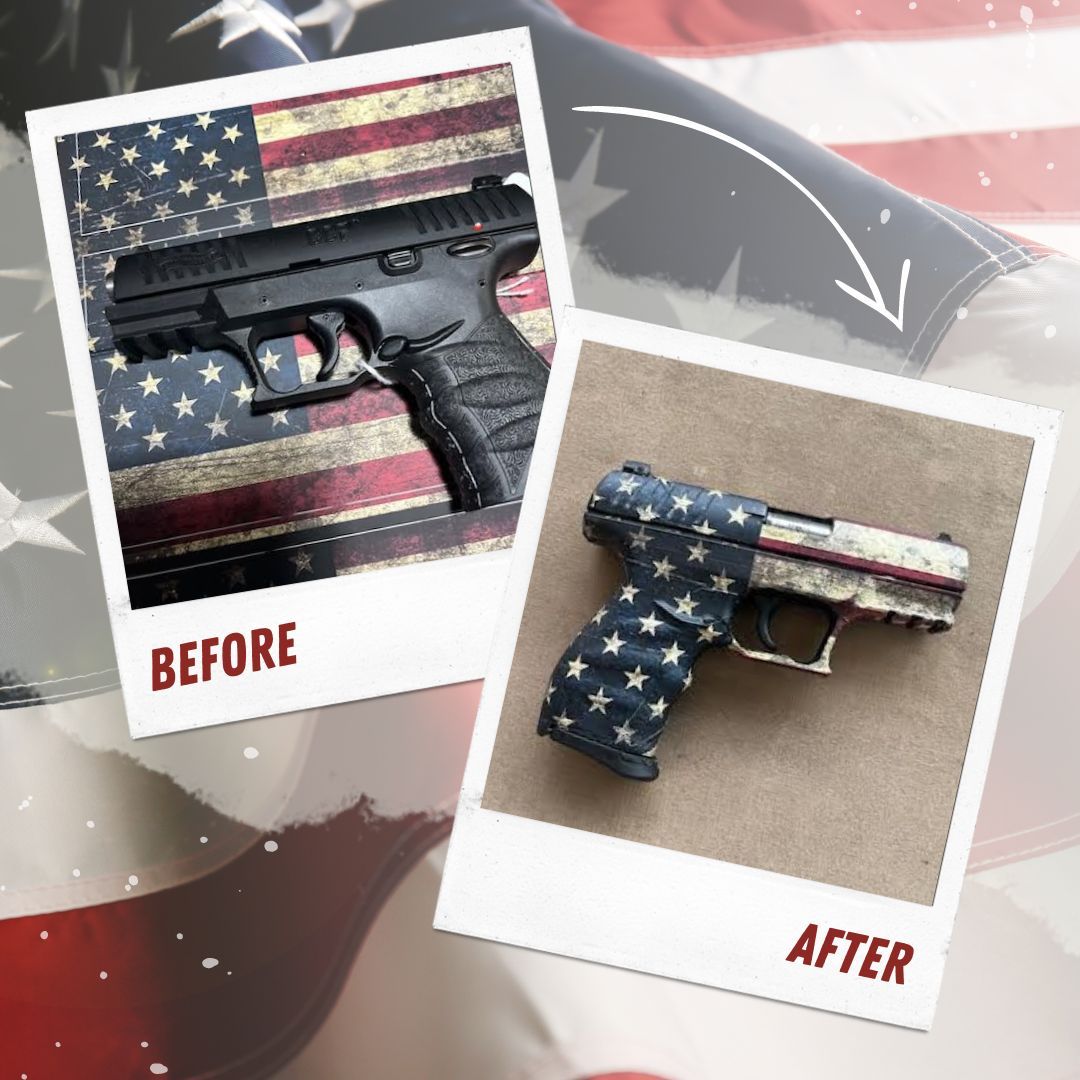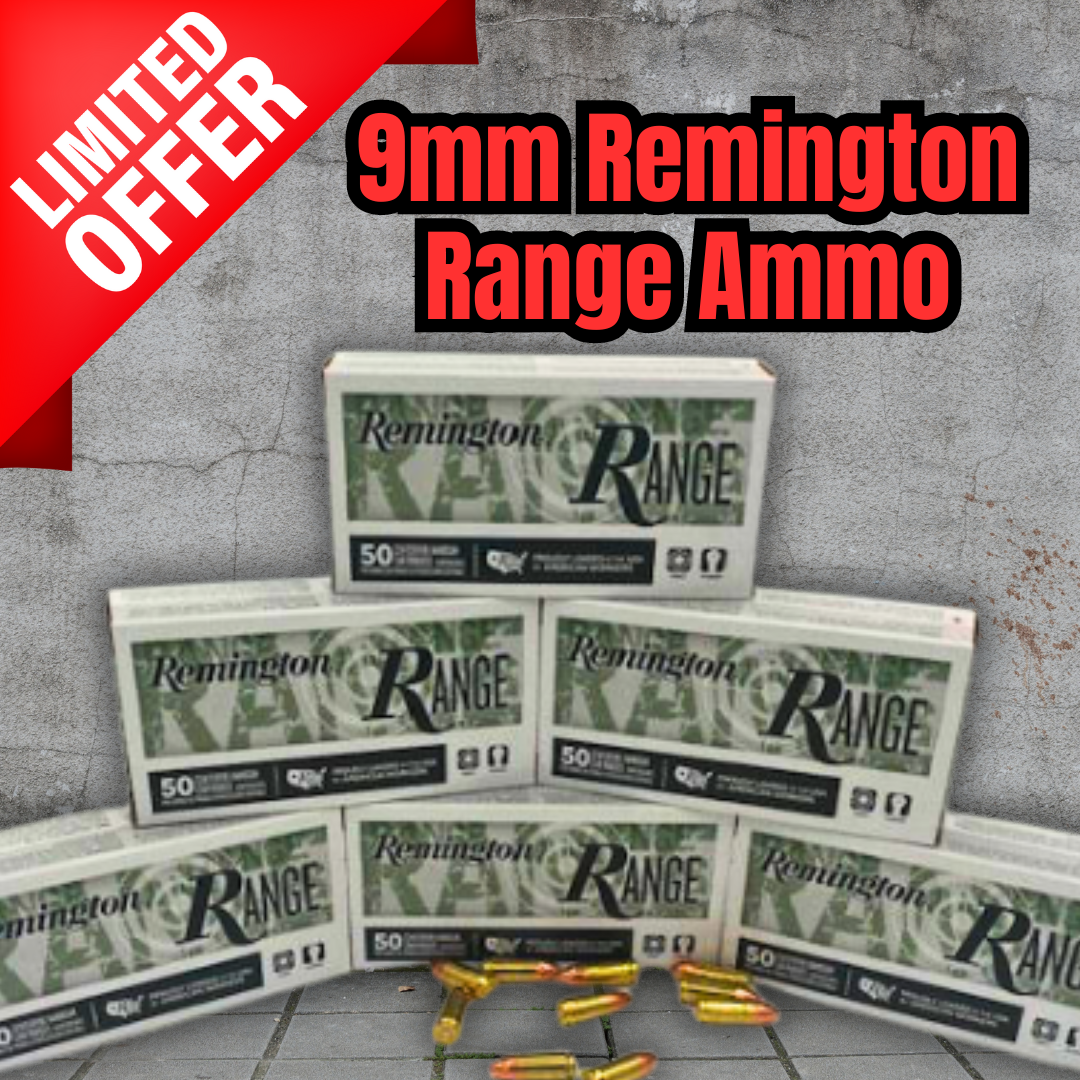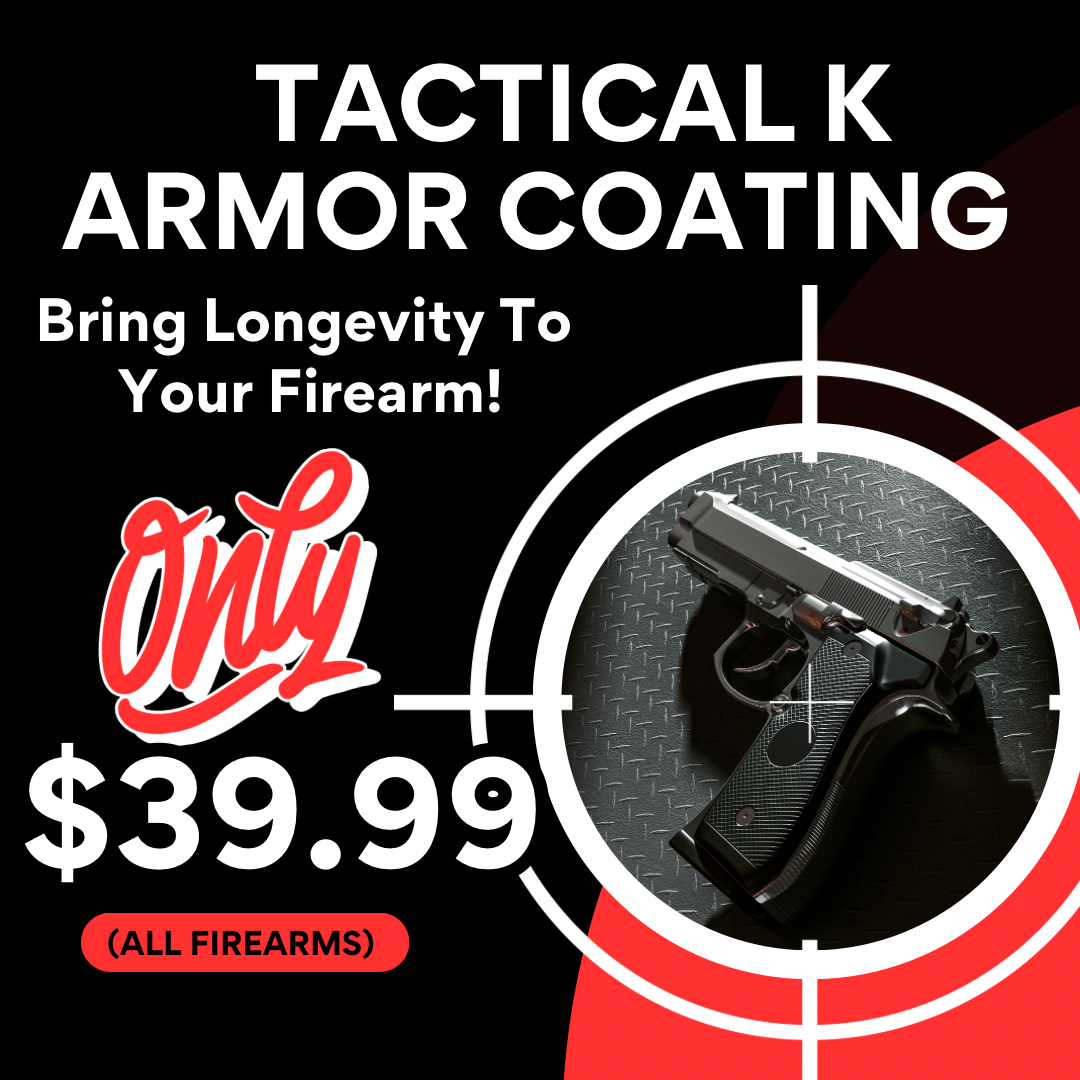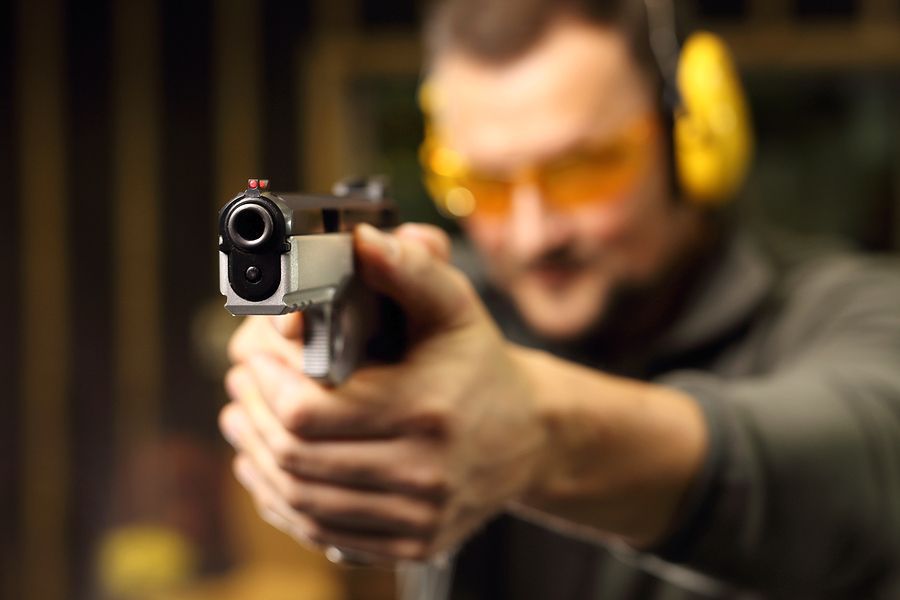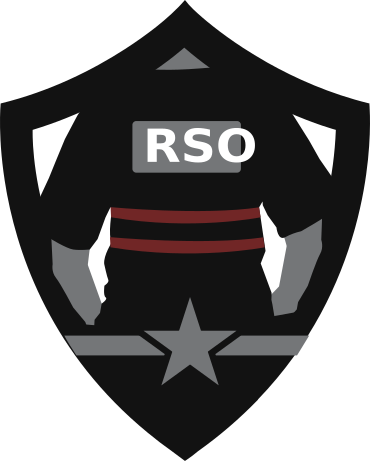Gregory Kielma • October 21, 2023
223 Remington/5.56 x 45mm NATO Cartridge

223 Remington/5.56 x 45mm NATO Cartridge
Hey Gregory,
Today's workbench is written by guest contributor and AGI Certified Gunsmith and GCA Moderator Robert Dunn:
There isn’t a day of my life that goes by that I don’t work with, reload, think or write about the .223 Remington and 5.56 NATO cartridges. Those cartridges are what a couple of my favorite and most used rifles are chambered for.
When I worked in an ammunition factory, I would sometimes get paid in .223 ammunition. When I was growing up in the early 1970s I became familiar with the .223 Remington cartridge, as it was the new round being used by our Armed Forces.
Warfighters throughout the world had realized the advantage of automatic firepower, but finding the perfect firearm and cartridge design is a huge challenge. In the case of the .223 Remington, many sources helped bring this cartridge into use by both civilians and the military.
Eugene Stoner of ArmaLite (then a division of Fairchild Industries) had gained the attention of the Military with his 7.62 x 51mm chambered AR-10 rifle. Like many high powered rifles, the AR-10 was hard to control during automatic fire.
Consequently, Fairchild Industries and Stoner were asked to scale down the AR-10 to fire a smaller caliber cartridge. Stoner came up with a prototype AR-15 and after a demonstration for the army, he was asked to produce more rifles for testing in 1957.
Select engineers and other companies like Remington Arms, Winchester as well as ArmaLite were asked to take part in developing this project. Springfield Armory’s Earle Harvey lengthened the .222 Remington case to the required specifications and it became the .224 Springfield, which was commercially known as the .222 Remington Magnum.
Frank Snow (of Sierra Bullets) and Eugene Stoner calculated the ballistics data for the .222 Remington to find the best bullet for the project, which ended up being a 55 grain bullet. Meanwhile, the Technical Editor for Gun and Ammo magazine, Robert Hutton, worked up a propellant recipe that could attain a velocity of 3,300 fps. Ultimately, Remington came up with the .222 Special cartridge, which was later renamed the .223 Remington because there were so many .222 designations.
Just a few of the military requirements for the firearm and cartridges were that they needed to be able to penetrate one side of a US Steel helmet at 500 yards, had to be able to exceed supersonic speed at 500 yards, had to be .22 caliber and select fire. From years of research and development of the AR-10 and AR-15, ArmaLite was facing financial difficulties and sold the rights for the rifles to Colt in 1959.
The AR-15 and the T44E4 rifle that would later be known as the M14 were being testing at the same time. To make a long story short, it was found that the AR-15 had far less failures per 1,000 rounds fired and that riflemen had a higher hit probability when firing Stoner’s rifle.
After Air Force General Curtis Le May test fired the AR-15, he ordered a batch of AR-15s to replace some of the M2 carbines that the Air Force was using. As the trials and testing continued, it was found that during marksmanship testing that many more men were achieving Expert shooting status with the AR-15 than they were with the M14. With these findings and the failure rate of the AR-15 going down even further, General Le May placed an order for 80,000 rifles in 1961.
In 1962, Remington filed the specs for the .223 Remington cartridge with SAAMI (Sporting Arms and Ammunition Manufacturer’s Institute) and the cartridge was later marketed commercially as a chambering for the Remington 760 rifle in 1963.
At this point in time, the United States was embroiled in the conflicts arising in Southeast Asia. It was politically decided that contracts for rifle manufacturing could be bid on by the private sector and Colt was awarded the contract to provide AR-15 rifles to fill orders for the Vietnam War.
The AR-15 rifle and the .223 Remington cartridge were formally adopted in 1964 and designated the XM16E1 rifle, commonly referred to as the M16, and the 5.56 Ball M193 cartridge. It was decided that the South Vietnamese troops would be supplied with the M16 rifle. Eventually, the Air Force, the US Army, Special Forces, the Coast Guard, the US Navy, the Marines as well as the SEAL teams had orders in for M16 rifles and cartridges. In 1965, Colt received orders for 800,000 M16E1 rifle and over 28,000 M16 rifles.
The M16 and the 5.56 Ball ammo would go through some major growing pains as the rifles and cartridges were issued to troops in Vietnam. Besides not being trained on how to properly clean the gun, the rifle suffered from many types of jams and failures.
Broken extractors and extractor springs accounted for many ejection failures and through more research, it was found that the propellant being used in the cartridges was creating horrific fouling of the gas and bolt system. The ball powder that was being used also created a longer pressure spike, which caused the case to expand in the chamber but it would not contract enough to be extracted.
The extractor would simply tear through the case rim, leaving the stuck case in the chamber. By using a different propellant, chrome plating the barrels and replacing the buffer with a new design that slowed down the cyclic rate, along with some other design changes, the problems were gradually sorted out. Unfortunately many American lives were lost because of these errors.
The process of selecting a smaller cartridge for use by NATO forces began in 1960. The cartridge design was based on the .223 Remington cartridge and its development was placed in the hands of FN Herstal. The rimless bottlenecked cartridge was named the 5.56 x 54mm NATO cartridge.
In 1980, the 5.56 NATO cartridge became the standard NATO rifle cartridge (known as the SS109 for NATO and the M855 for the United States). The 5.56mm cartridges allowed the soldier to be able to carry more ammunition, which equated to more firepower and logistically many more rounds could be transported to hot spots around the world by weight than the larger 7.62 NATO cartridges. On a global scale this can equal a savings of millions of dollars.
The number of firearms that are chambered for the 5.56 NATO cartridge is too numerous to list here. Just think about all of the different squad automatic weapons, rifles, carbines and machine guns that each NATO country uses…that is a lot of different weapons!
The Frankford Arsenal, Remington and Winchester produced the first lots of .223 ammunition for the United States Armed Forces. During the trials and testing of the AR-15, 19 Million .223 cartridges were purchased. When a cartridge does well for the military, the Law Enforcement and civilian communities usually follows their lead. If you have ever read the 27 page document for the military specifications for the M855 cartridge (5.56 x 54mm), you can see that heavy scrutiny has already been applied to the 5.56mm round!
The .223 Remington cartridge has become one of the most used cartridges in the United States. It is a great varmint and predator cartridge and could be used for larger game if need be by loading a heavier bullet like a Hornady GMX or Barnes TSX 70-grain projectiles. These slower moving heavier bullets seem to do quite well in windy conditions. The above attributes make the 5.56mm round a flexible survival cartridge too.
You may have noticed or even been annoyed by the interchanging .223/5.56 terminology, here are of the important similarities and difference between the two cartridges. The case dimensions are exactly the same, though case thickness/propellant capacity can vary significantly between manufacturers which will have an effect on the resulting pressures.
The 5.56 x 45mm NATO or other military 5.56 ammo tends to be loaded hotter, so chamber pressures will be greater than the typical .223 Remington load. For this reason, .223 Remington rounds can be safely fired in a 5.56 chambered gun but 5.56mm ammo should not be fired in a .223 Rem chambered gun.
The reason for this really comes down to the differences in the chamber dimensions between .223 and 5.56 barrels. The throat/free bore and leade of a 5.56mm chamber is longer. The throat of the chamber is the unrifled section of the chamber just forward of the neck and gives the bullet a place to sit. Leade or lead is the section of the bore of a rifled barrel located just ahead of the throat of the chamber. It is a conical shaped transition from end of the throat to the fully rifled part of the barrel.
In an effort to gain more accuracy from the 5.56mm NATO cartridge, Bill Wylde created the .223 Wylde, which is a chamber design that utilizes the same external dimensions and lead angle of a 5.56 NATO cartridge and the freebore diameter of the .223 Remington cartridge. Another company that uses a proprietary chamber design to achieve better accuracy from the 5.56mm NATO cartridge is Noveske. A Noveske barrel is not cheap but they are known for their precision and high quality products.
SAAMI specs are followed by manufacturers in the U.S. loading .223 Remington ammo but those same manufacturers who also load 5.56 ammo do not follow SAAMI specs because the 5.56 rounds are loaded to military specifications and thus not held to SAAMI specs. In Europe, the international organization C.I.P. tests and sets the safety standards for firearms and ammunition. In countries that are regulated by the C.I.P., .223 Remington ammunition is proof tested at the same maximum service pressure as the 5.56 x 54mm NATO cartridges.
There have been a lot of challenges that had to be met throughout the history of the AR-15 and the 5.56 x 54mm cartridge. The twist rate of a barrel and the chamber dimensions greatly effect performance and accuracy. The shorter barreled M4 carbines and the requests for even shorter barrel lengths coming from the Special Forces communities have kept firearms and ammunition engineers busy. At this point in time, the AR-15 style rifles and the .223 Rem and 5.56 NATO cartridges offer a very reliable and accurate shooting platform.
The AR-15 rifle and .223/5.56 cartridge combination have gone through many changes together. They are still being used by our Military/Law Enforcement and civilian populations to good affect every day. This combo is a must for 3-gun competition. The .223 Remington cartridge is not overly expensive and there is always a wide variety of ammunition to choose from. There is a lot of surplus ammo to select from as well. Many other firearms are chambered in .223 Rem besides the AR-15 type guns.
The 5.56mm round is a good cartridge to reload for, as there is a huge variety of quality components to choose from as well. In 1964, the year I was born, these cartridges were the new warfighting cartridge and the US Armed Forces began using them. It’s easy for me to remember how many years these cartridges have been in use!
Become an American Gunsmith and continue to preserve our Firearm’s Heritage!
Robert Dunn,
Gunsmith & Community Moderator
American Gunsmithing Institute
Gunsmithing Club of America

Glock Switch and FRT’s: What’s The Difference? Gregg Kielma 01/09/2026 Will FRTs Go the Same Way as Glock Switches? Kielma’s say’s; Short answer: No — at least not right now. Legally, FRTs and Glock switches are in very different places at the Federal Level. Here’s the Breakdown Kielma say’s “Let’s Take A LOOK” 1. Federal Status: FRTs vs. Glock Switches Glock Switch (Auto Sear) • Always classified as a machine gun under federal law. • Possession = felony, even if not installed. • No court rulings have changed that. Forced Reset Triggers (FRTs) • As of the May 2025 DOJ settlement, FRTs are NOT classified as machine guns under federal law because each shot still requires a separate trigger pull. • Federal courts agreed that FRTs do not meet the NFA machine gun definition. • ATF has even begun returning seized FRTs to owners. So federally, FRTs are not in the same category as Glock switches. 2. State-Level Reality This is where things get messy. Even though FRTs are federally legal: • Several states still ban them outright (CA, CT, HI, MD, NJ, etc.). • Sixteen states are actively challenging the federal settlement in court. So while Glock switches are universally illegal, FRTs are in a patchwork legal environment. 3. Could FRTs Be Reclassified Later? It’s possible — but not guaranteed. Factors: • Ongoing appeals in the Fifth Circuit. • Potential Supreme Court involvement. • Political pressure from states arguing FRTs increase rate of fire. But right now, the legal trend is moving in the opposite direction of Glock switches — toward less federal restriction, not more. Kielma’s Parting Shot: FRTs are not on the same legal trajectory as Glock switches. Glock switches = always illegal machine guns. FRTs = currently federally legal, but with state bans and ongoing litigation.

Forced Reset Triggers (FRTs): What Responsible Gun Owners Should Know in 2026 Gregg Kielma By Tactical K Training & Firearms – Parrish, Florida The conversation around Forced Reset Triggers (FRTs) has grown louder over the past few years, and many gun owners are still unsure where these devices stand today. At Tactical K Training and Firearms , our mission is to help Florida gun owners stay informed, stay safe, and stay on the right side of the law. This post breaks down what FRTs are, how they function, and what their current legal status means for responsible firearm owners. What Exactly Is an FRT? A Forced Reset Trigger is an aftermarket trigger system—mostly used in AR 15 pattern rifles—that mechanically forces the trigger forward after each shot. Unlike a standard semi automatic trigger, which resets only when the shooter releases it, an FRT uses the firearm’s cycling energy to push the trigger forward more aggressively. The important part: The shooter must still pull the trigger for every shot. The design simply allows for faster follow up shots due to the rapid mechanical reset. Why FRTs Became a Legal Battleground FRTs entered the national spotlight when federal agencies argued that certain models functioned like machineguns. Their position was that maintaining pressure on the trigger could allow multiple shots during a “single continuous pull.” However, federal courts later ruled that because the trigger physically resets between shots—and because the shooter must apply pressure each time—FRTs do not meet the statutory definition of a machinegun. This led to major legal reversals, including the end of federal enforcement actions against manufacturers. That said, the legal landscape is still evolving, and responsible gun owners should stay alert to changes. Federal vs. State Law: Know the Difference As of 2026: • Federal law does not classify FRTs as machineguns. • Some states still ban or heavily restrict FRTs, often under “rapid-fire trigger activator” laws. • Florida does not currently ban FRTs, but owners should remain aware of ongoing national litigation and potential legislative changes. If you travel with firearms, especially across state lines, it’s essential to understand the laws of the states you’re entering. Federal legality does not override state-level restrictions. Why This Matters for Florida Gun Owners At Tactical K Training and Firearms , we emphasize three pillars: Avoid. Escape. Defend. Owning specialized equipment—whether it’s an FRT, a red-dot optic, or a defensive handgun—comes with the responsibility to understand both the mechanics and the law. For FRT owners, that means: • Keeping documentation and proof of purchase • Staying updated on legal developments • Using the equipment safely and responsibly • Never relying on internet rumors for legal guidance Our goal is to help you make informed decisions that protect your rights and your future. Safety First: The Tactical K Training and Firearms Approach Regardless of trigger type, the fundamentals never change: • Know your target and what’s beyond it • Keep your finger off the trigger until ready to fire • Understand your equipment before using it • Train regularly with qualified instructors A faster trigger does not replace skill, judgment, or safe handling. It’s simply a tool—and tools are only as safe as the person using them. Kielma's Parting Shot; Tactical K Training and Firearms Final Thoughts Forced Reset Triggers are a perfect example of how quickly the legal and technical landscape can shift. While federal courts have clarified their position, the conversation is far from over. As always, Tactical K Training and Firearms will continue to provide clear, responsible, and up to date information to help Florida gun owners stay educated and empowered.
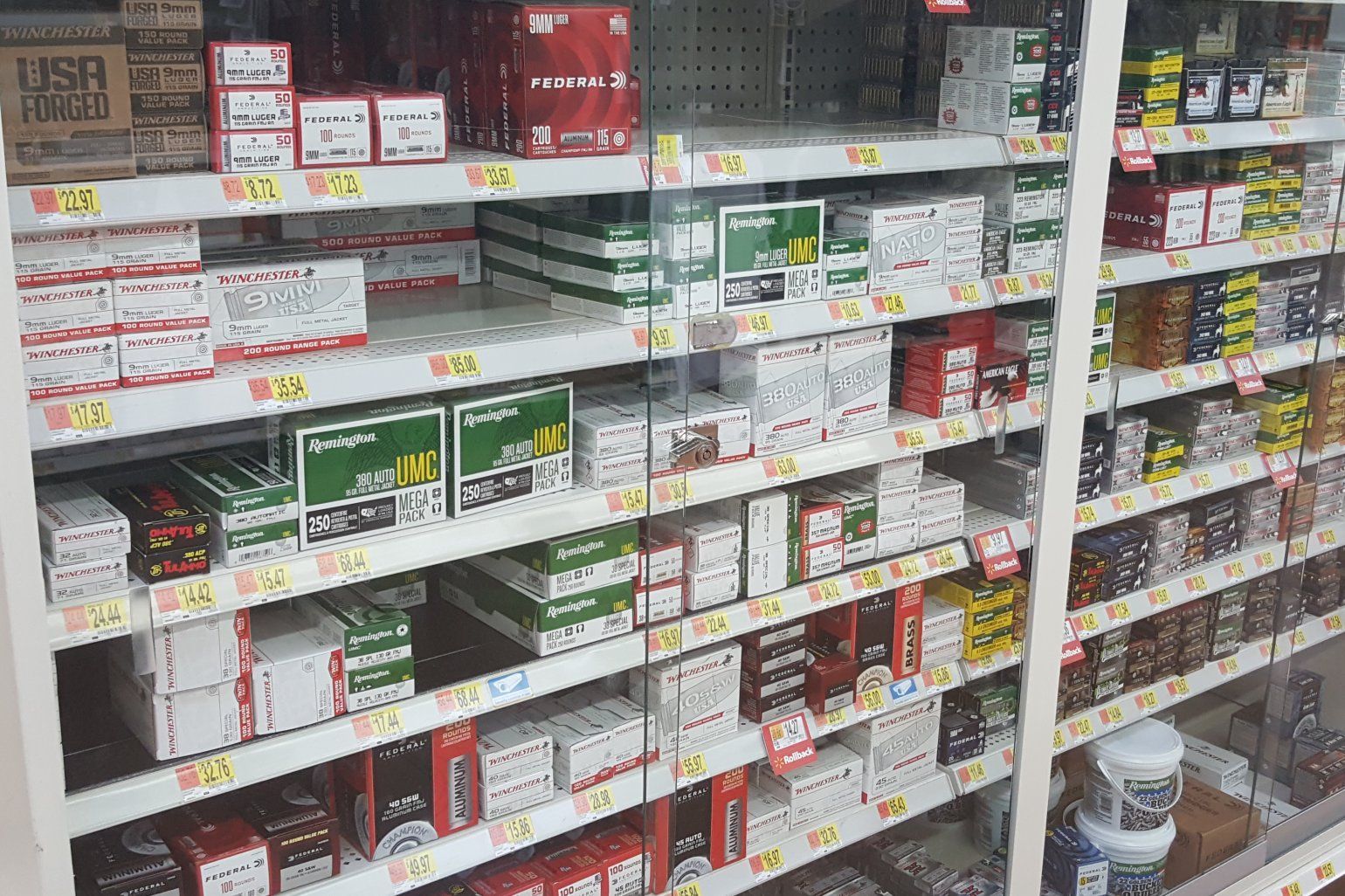
What Ammo Shooters Must Bring in 2026 Gregg Kielma 01/09/2026 1. Factory New, Brass Cased Ammunition Most ranges now require: • Brass cases only • No steel case • No steel core • No bi metal jackets Expect more magnet checks at the firing line. If a round sticks to a magnet, it’s likely not allowed. 2. Ammunition Within Posted Velocity Limits Ranges are increasingly enforcing: • No “hot” loads • No +P+ in certain calibers • No magnum rifle rounds unless the range is rated for them This protects berm integrity and reduces noise impact on surrounding communities. 3. No Tracer, Incendiary, or Armor Piercing Rounds Outdoor ranges — even those historically more flexible — are now banning: • Tracers • Incendiary rounds • Armor piercing projectiles These rounds pose fire risks and can penetrate berms beyond safe limits. 4. Original Packaging Required Shooters should bring: • Factory boxes • Visible labeling • Lot numbers This allows RSOs to verify ammo type quickly and prevents unsafe reloads from being passed off as factory rounds. 5. Reloads Only If Approved Some ranges still allow reloads, but with strict conditions: • They must be your own • They must be brass and non magnetic • They must meet posted velocity limits Many facilities, however, are moving to factory only policies for liability reasons. What This Means for Outdoor Ranges Outdoor ranges traditionally allowed: • Steel case • Bi metal • Higher velocity rifle rounds But in 2026, many are adopting rules similar to indoor facilities. Expect: • Brass only • Non magnetic bullets • No tracers • Velocity caps • Factory new only This shift ensures safer training environments and reduces the risk of fires, ricochets, and berm damage. How Tactical K Training and Firearms Helps You Stay Compliant At Tactical K Training, we stay ahead of regulatory and industry changes so our students don’t have to guess. Whether you’re attending a concealed carry class, a defensive pistol course, or a private training session, we’ll always provide clear guidance on: • Approved ammunition • Range specific requirements • Equipment checks • Safety protocols Kielma’s Parting Shot Our goal is simple: empower responsible gun owners with the knowledge and skills to train safely and confidently.

Ghost Guns: What Are They, and Are They Legal? Gregg Kielma 01/08/2026 My thoughts. I will not look at or deal with a firearm that do not have a serial number. I suggest to these clients you need to call the ATF for guidance. I do not and will not work with clients with GHOST Guns. The process is difficult. My policy. If it offends someone so, be it. Let’s Take a LOOK Privately made firearms—often called ghost guns—are weapons assembled by individuals from unfinished parts, kits, or 3D printed components. Traditionally, these firearms did not carry serial numbers and could be built without a background check, making it difficult for law enforcement to trace. This lack of traceability is what earned them the nickname “ghost guns.” In recent years, the federal government has taken significant steps to regulate these firearms. According to multiple legal analyses and Supreme Court updates, ghost guns are now treated much more like commercially manufactured firearms under federal law. The Supreme Court upheld an ATF rule requiring that key components—such as frames and receivers sold in kit form—must have serial numbers and can only be sold by licensed dealers who conduct background checks. This means that while it is still legal for individuals to build their own firearms for personal use, the parts and kits used to make them are now regulated. Purchasing a kit that can be “readily converted” into a functional firearm generally requires the same legal steps as buying a complete gun. In short: • Building your own firearm is still legal under federal law, as long as you are not prohibited from owning a firearm. • Ghost gun kits and unfinished receivers are now regulated, requiring serialization, licensed sales, and background checks. • State laws vary, and some states impose additional restrictions. Kielma's Parting Shot: For responsible gun owners, the key is to stay informed. As regulations evolve, understanding the legal landscape ensures you remain compliant while exercising your rights safely and responsibly. Gregg Kielma
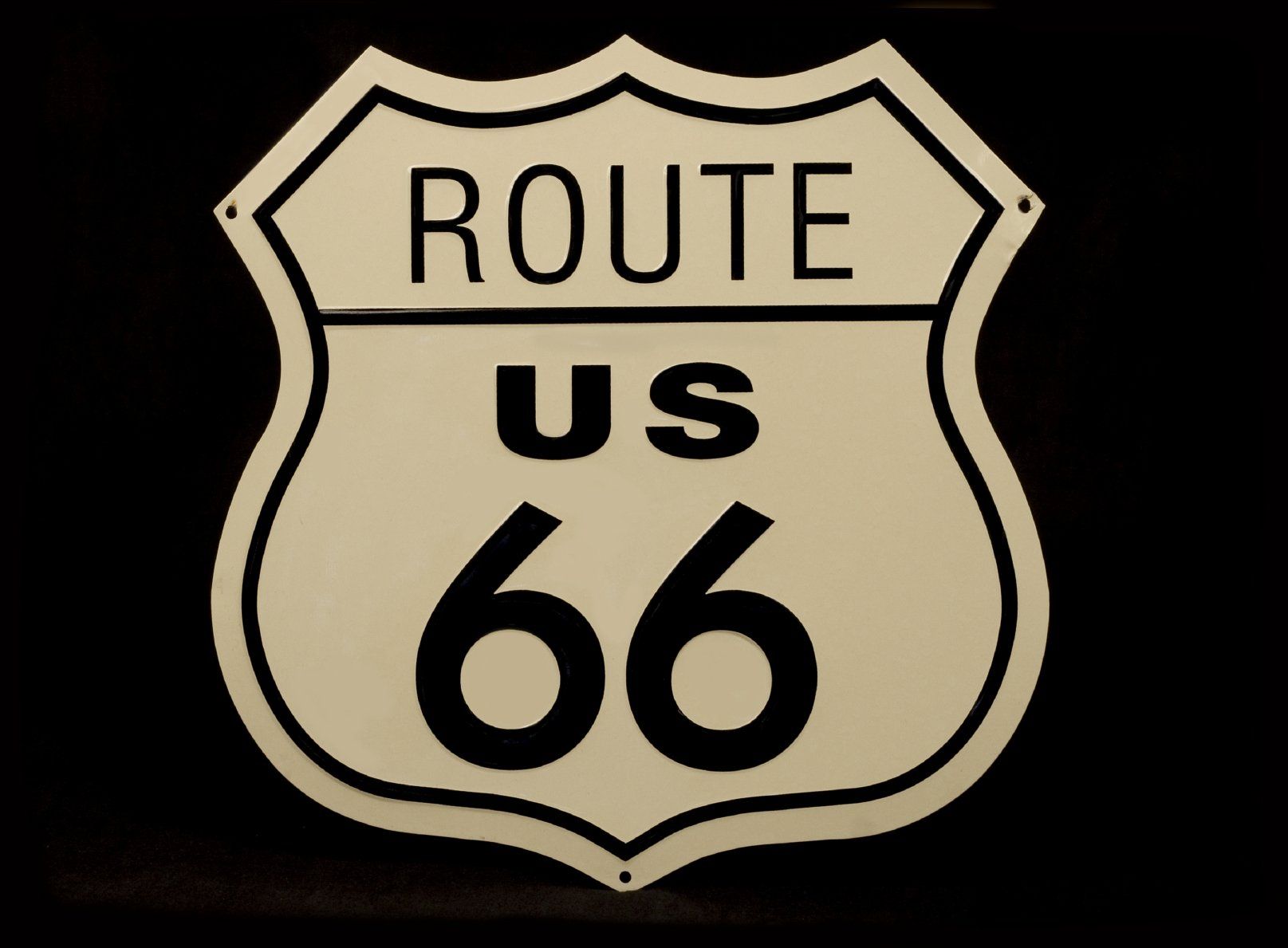
What Legal Gun Owners Should Do When Crossing State Lines and Moving to Another State Gregg Kielma 01/08/2026 I talk about this in my classes. Know the laws and states you are traveling through and make good decisions. It's your duty to understand the laws before you travel. My thoughts and suggestions. Let's Take a LOOK Traveling with a firearm is completely legal for responsible gun owners — but the moment you cross a state line, the rules change. Every state has its own laws on possession, carry, transport, and reciprocity, and misunderstanding those laws can turn an ordinary road trip into a legal nightmare. A little preparation goes a long way toward staying safe and compliant. 1. Know the Federal “Safe Passage” R ule Federal law under the Firearm Owners Protection Act (FOPA) provides a safe passage provision for travelers. As long as the firearm is unloaded, locked away, and not readily accessible, you may legally pass through states where your firearm might otherwise be prohibited. This protection only applies to transport, not carry, and only when you are traveling from one lawful location to another. 2. Research Every State on Your Route State laws vary widely — from permitless carry to strict permit requirements. Some states honor your carry permit, while others do not. Guides that break down state-by-state rules emphasize that laws change frequently, so checking updated information before each trip is essential. 3. Follow Proper Transport Procedures When traveling through states where you cannot legally carry: • Unload the firearm • Store it in a locked case • Keep ammunition separate • Place both in an area not accessible to the driver (trunk or rear compartment) These steps align with federal transport requirements and help ensure compliance across jurisdictions. 4. Understand Reciprocity — Don’t Assume Even if your home state allows permitless carry, that does not mean other states do. Reciprocity agreements determine where your permit is valid, and these agreements change over time. Updated concealed carry guides stress the importance of verifying reciprocity before traveling. 5. Avoid Unnecessary Stops in Restrictive States FOPA protects you during continuous travel, but extended stops — such as overnight stays, sightseeing, or detours — may remove that protection. When in doubt, plan your route to minimize time spent in states with restrictive laws. 6. Document Everything Keep: • Your carry permit • Firearm documentation • Proof of destination (hotel reservation, training class, hunting license, etc.) This helps demonstrate lawful purpose if questioned. 7. When Moving to a New State, Learn the New Rules If you’re relocating, not just traveling, additional requirements may apply. Some states require registration, waiting periods, or specific transport rules for new residents. Kielma’s Parting Shot Crossing state lines with a firearm is absolutely manageable for responsible gun owners — it just requires preparation. Know the laws, secure your firearm properly, and verify reciprocity before you go. Responsible travel protects your rights, your safety, and your peace of mind.
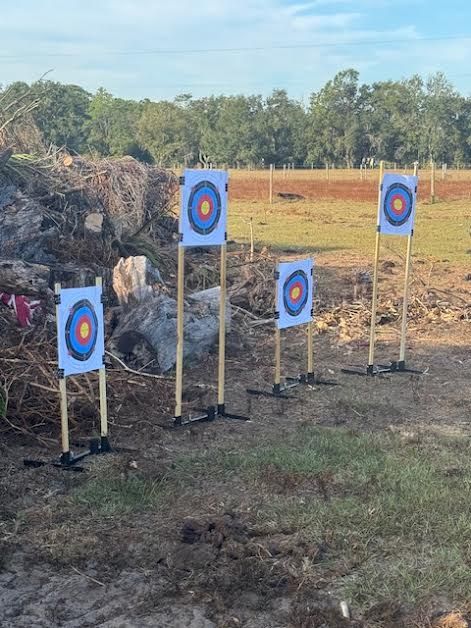
Outdoor Range Ammunition in Florida: What’s Allowed? By Gregg Kielma A Tactical K Training & Firearms Ammo Brief Range Owner Gregg Kielma announces that starting April 1st, all ammo will be checked for range compliance before shooting. If your ammo is non-compliant, compliant ammo can be purchased from Tactical K Training and Firearms. Please review the new ammo guidelines below and call with any questions. No exceptions will be made after April 1st. For Florida gun owners, knowing which types of ammunition are legal — and which are prohibited — is essential before stepping onto any outdoor shooting range. While Florida has strong statewide preemption that prevents counties and cities from creating their own ammo rules, the state does enforce several important restrictions that every shooter should understand. Florida’s Statewide Ammunition Rules Florida law allows most common ammunition used for training, recreation, and defensive practice. Standard FMJ, JHP, soft point, frangible, and target loads are all legal for use at outdoor ranges. However, the state does prohibit several specific types of ammunition due to safety and fire risk concerns: Prohibited Ammunition in Florida Florida law bans the manufacture, sale, delivery, or possession of the following specialty rounds: • Armor piercing handgun ammunition • Exploding bullets • Dragon’s Breath shotgun shells • Bolo shells • Flechette shells Possessing armor piercing or exploding ammunition in a handgun — or possessing Dragon’s Breath, bolo, or flechette shells in any firearm — is illegal in Florida. These rounds are not permitted at any outdoor range, public or private. What Outdoor Ranges Commonly Allow Most outdoor ranges in Florida, including private training facilities like Tactical K Training, allow: • Standard pistol and rifle ammunition • Hollow points and defensive ammunition • Frangible rounds (often preferred for steel targets) • Shotgun birdshot and buckshot (range dependent) • Slugs (range dependent) Because Florida preempts local governments from regulating ammunition, the only additional restrictions you’ll encounter typically come from the range itself — based on safety, backstop design, or fire risk management. Fire Safety Considerations Outdoor ranges may restrict: • Steel core or bi metal ammo (sparks on steel targets) • Tracer rounds (fire hazard) • Incendiary rounds (fire hazard) While not banned by Florida statute, these rounds can create wildfire risks, especially during dry seasons. Many private ranges prohibit them for that reason. Kielma’s Parting Shot: Bottom Line for Florida Shooters If you’re using standard ammunition — FMJ, JHP, soft point, frangible, or typical shotgun loads — you’re well within Florida law. Just avoid the prohibited specialty rounds listed above and follow any additional safety rules set by my range orthe range you’re visiting.

FBI Disrupts Alleged New Year’s Eve Attack, Man Charged with Attempting to Provide Material Support to ISIS Friday, January 2, 2026 Office of Public Affairs Today, the Justice Department and the U.S. Attorney's Office for the Western District of North Carolina announced that a Mint Hill, North Carolina man that allegedly planned to use knives and hammers to execute a deadly New Year’s Eve attack at a grocery store and a fast food restaurant in support of the Islamic State in Iraq and al-Sham (ISIS) has been arrested and charged with attempting to provide material support to a foreign terrorist organization. The criminal complaint was filed on Dec. 31, 2025, and was unsealed today after Christian Sturdivant, 18 , appeared in federal court in Charlotte. “This successful collaboration between federal and local law enforcement saved American lives from a horrific terrorist attack on New Year’s Eve,” said Attorney General Pamela Bondi. “The Department of Justice remains vigilant in our pursuit of evil ISIS sympathizers — anyone plotting to commit such depraved attacks will face the full force of the law.” “The accused allegedly wanted to be a soldier for ISIS and made plans to commit a violent attack on New Year’s Eve in support of that terrorist group, but the FBI and our partners put a stop to that,” said FBI Director Kash Patel. “It is essential to work closely with our law enforcement partners and to quickly share information about potential threats, as demonstrated in this case. The message from the FBI is clear — anyone who supports ISIS or other terrorist groups cannot hide and will be held accountable in our justice system.” “As alleged, Sturdivant aspired to become a ‘martyr’ for ISIS and was in the final stages of planning a mass-casualty attack on New Year’s Eve. Notes recovered from his home appear to reflect intent to harm as many people as possible and terrorize the Nation,” said Assistant Attorney General John A. Eisenberg of the Justice Department's National Security Division. “We commend the extraordinary work of our partners in neutralizing this threat.” “Americans deserve to celebrate New Year’s Eve without worrying about their personal safety,” said U.S. Attorney Russ Ferguson for the Western District of North Carolina. “That is why we worked non-stop to thwart this alleged violent terrorist attack. I am proud of the work done here and thankful for the time spent by law enforcement away from their families during the holidays to ensure public safety.” “The FBI’s mission is to protect the American people, and this case demonstrates our dedication to do everything we can to protect the residents of North Carolina,” said Special Agent in Charge James C. Barnacle Jr. of the FBI Charlotte Field Office. “We worked closely with the Department of Justice, NYPD, Mint Hill Police Department, and our FBI Joint Terrorism Task Force partners to investigate and disrupt this serious threat of a violent attack. We will never stop working to hold people accountable who seek to harm and terrorize our community.” “Christian Sturdivant allegedly swore allegiance to an international terrorist organization and plotted deadly attacks in its name,” said NYPD Commissioner Jessica S. Tisch. “But the New York City Police Department has a long reach, and our undercover cybersecurity investigators once again identified threats of extremist behavior and thwarted them before they could be carried out. Public safety knows no borders, and we will continue to work with all our law enforcement partners and the U.S. Attorney’s Office to pursue and hold accountable anyone who seeks to spread fear and violence.” “Now more than ever, partnerships between law enforcement agencies are paramount,” said Chief Joseph Hatley of the Mint Hill Police Department. “This disruption is a testament to all involved, working as one to thwart an attack and hold accountable anyone planning such a horrific act of violence against our community.” According to allegations in the arrest affidavit, on Dec. 18, 2025, the FBI in Charlotte received information that an individual later identified as Sturdivant was making multiple social media posts in support of ISIS, a designated foreign terrorist organization. In early December 2025, Sturdivant posted an image depicting two miniature figurines of Jesus with the on-screen text that read, “May Allah curse the cross worshipers.” The post is allegedly consistent with ISIS’s rhetoric calling for the extermination of all non-believers, including Christians, Jews, and Muslims who do not agree with ISIS’s extreme ideology. Sturdivant’s social media post in early December 2025 The criminal complaint alleges that on or about Dec. 12, 2025, Sturdivant began communicating with an online covert employee, or “OC,” whom Sturdivant thought was an ISIS member. Sturdivant told the OC, “I will do jihad soon,” and proclaimed he was “a soldier of the state,” meaning ISIS. On Dec. 14, 2025, Sturdivant allegedly sent an online message to the OC with an image of two hammers and a knife. This is significant because an article in the 2016 issue of ISIS’s propaganda magazine promoted the use of knives to conduct terror attacks in western countries. The same article inspired actual attacks in other countries. Later, Sturdivant told the OC that he planned to attack a specific grocery store in North Carolina. Sturdivant also told the OC about his plans to purchase a firearm to use along with the knives during the attack, according to the arrest affidavit. Dec. 14, 2025, Sturdivant’s online message to undercover law enforcement with image of two hammers and a knife. In addition, on Dec. 19, 2025, Sturdivant allegedly sent the OC a voice recording of Sturdivant pledging “Bayat,” a loyalty oath to ISIS. On Dec. 29, 2025, law enforcement conducted a search warrant at Sturdivant’s residence, where they discovered handwritten documents, one of which was titled “New Years Attack 2026.” The document listed items such as a vest, mask, tactical gloves, and two knives allegedly to be used in the attack. It also described a goal of stabbing as many civilians as possible, with the total number of victims to be as high as 20 to 21. The note also included a section labeled as “martyrdom op,” that described a plan to attack police responding to the site of the attack so Sturdivant would die a martyr. Handwritten document titled “New Years Attack 2026” The complaint alleges that Sturdivant lived with a relative, who secured knives and hammers away so Sturdivant could not use them for harm. Yet, law enforcement seized from Sturdivant’s bedroom a blue hammer, a wooden handled hammer, and two butcher knives which appeared hidden underneath the defendant’s bed. These items appear to be the same as the ones depicted in the online message Sturdivant previously sent to the OC. Items seized from Sturdivant’s bedroom on Dec. 29, 2025, pursuant to a federal search warrant Law enforcement also seized from Sturdivant’s bedroom a list of targets, as well as tactical gloves and a vest, acquired as part of the defendant’s planned attack. Sturdivant remains in federal custody. If convicted, Sturdivant faces a statutory maximum penalty of 20 years in federal prison. A federal district court judge will determine the ultimate sentence after considering the U.S. Sentencing Guidelines and other statutory factors. The investigation was conducted by the FBI Charlotte Joint Terrorism Task Force, which includes the Charlotte-Mecklenburg Police Department, the Matthews Police Department, the Monroe Police Department, the Bureau of Alcohol, Tobacco, Firearms and Explosives, the U.S. Customs and Border Protection, the Federal Air Marshal Service, the Homeland Security Investigations, the Internal Revenue Service, the U.S. Postal Inspection Service, and the U.S. Citizenship and Immigration Services, with the assistance of the NYPD, additional FBI Field Offices, and the Mint Hill Police Department. The case is being prosecuted by Assistant U.S. Attorney Robert Gleason for the Western District of North Carolina and DOJ Trial Attorney Elisa Poteat with the National Security Division’s Counterterrorism Section. The charges against the defendant are merely allegations and the defendant is presumed innocent unless proven guilty beyond a reasonable doubt in a court of law. Updated January 2, 2026
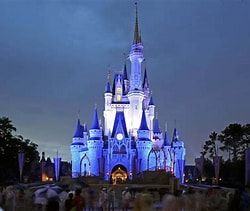
Disney Agrees to $10M Civil Penalty and Injunction for Alleged Violations of Children’s Privacy Laws From The US Department of Justice January 3, 2026 The Justice Department announced today that a federal court has entered a stipulated order resolving a case against Disney Worldwide Services Inc. and Disney Entertainment Operations LLC, (collectively, Disney). The Federal Trade Commission (FTC) investigated this matter, negotiated a resolution with Disney, and referred the case to the Department. Under the order, Disney will pay $10 million in civil penalties as part of a settlement to resolve Federal Trade Commission allegations that Disney violated the Children’s Online Privacy Protection Act and its implementing regulations (COPPA) in connection with Disney’s popular YouTube video content. COPPA prohibits website operators from knowingly collecting, using, or disclosing personal information from children under the age of 13 (hereinafter, children), unless they provide notice to and obtain consent from those children’s parents. In a complaint filed in the U.S. District Court for the Central District of California, the government alleged that Disney improperly failed to designate YouTube video content as directed toward children. As a result, Disney, and others acting on Disney’s behalf, targeted advertising toward children on YouTube and unlawfully collected children’s information without parental notice and consent, in violation of COPPA. Disney’s YouTube video content is extremely popular, with billions of views in the United States alone. “The Justice Department is firmly devoted to ensuring parents have a say in how their children’s information is collected and used,” said Assistant Attorney General Brett A. Shumate of the Justice Department’s Civil Division. “The Department will take swift action to root out any unlawful infringement on parents’ rights to protect their children’s privacy.” In addition to imposing a $10 million civil penalty on Disney, the stipulated order bars Disney from operating on YouTube in a manner that violates COPPA and requires Disney to create a program that will ensure it properly complies with COPPA on YouTube going forward. The United States is represented in this action by Assistant Director Zachary A. Dietert, and Trial Attorneys Zachary L. Cowan and Francisco L. Unger, from the Enforcement Section of the Civil Division’s Enforcement and Affirmative Litigation Branch. Jacqueline Ford represents the FTC.
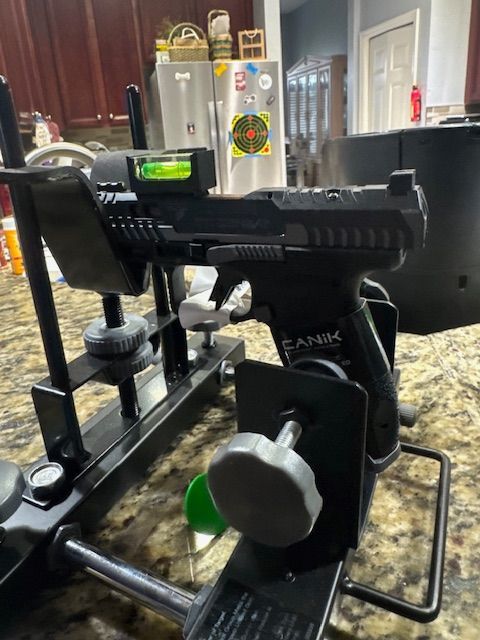
Kielma Installing and Sighting In A New Optic Why Handgun Sighting In Is Essential for Every Responsible Shooter Gregg Kielma 01/04/2026 Gunsmith Gregg Kielma recommends spending $30–$40 (Handgun) to have a professional sight in your new or current firearm. If your shots are off target, such as low and left, let a gunsmith inspect it, it's an inexpensive way to ensure top performance. Here are my thoughts, Let’s Take a LOOK. Handguns are often marketed as “ready out of the box,” but any experienced shooter knows that true accuracy doesn’t come from assumptions — it comes from verification. Sighting in a handgun is one of the most overlooked steps in responsible firearm ownership, yet it’s one of the most important. Whether you carry daily, shoot recreationally, or train for defensive proficiency, confirming your sights is a foundational part of safety, confidence, and performance. Accuracy Starts With a Known Zero Every handgun, even from the same manufacturer and model line, can shoot slightly differently. Variations in ammunition, barrel harmonics, sight height, and shooter grip all influence point of impact. Sighting in ensures: • Your rounds land exactly where your sights indicate • You understand how your chosen ammunition performs • You eliminate guesswork in a defensive situation Kielma suggests: A verified zero is the difference between “close enough” and true precision. Equipment Changes Require Confirmation Any time you adjust or replace sights — whether installing night sights, fiber optics, red dots, or suppressor height irons — you must confirm alignment on the range. Even factory installed sights can be slightly off due to manufacturing tolerances or shipping impacts. Kielma suggests: A quick sight in session ensures your equipment is working with you, not against you. Sighting In Builds Shooter Confidence Confidence is a critical component of effective shooting. When you know your handgun is properly sighted in, you remove doubt and hesitation. That confidence translates into: • Better shot placement • Faster follow up shots • Improved decision making under stress Kielma suggests: A shooter who trusts their equipment performs at a higher level. A Key Part of Defensive Readiness In a defensive encounter, accuracy matters more than anything. You are responsible for every round fired. A handgun that hasn’t been sighted in introduces unnecessary risk — to you, your loved ones, and bystanders. Kielma suggests: A confirmed zero ensures that if you ever need your firearm to protect life, it will perform exactly as expected. Understanding Your Personal Point of Aim vs. Point of Impact Every shooter has unique biomechanics: grip strength, wrist angle, trigger press, and stance. These factors influence where rounds land. Sighting in helps you understand: • How you shoot your handgun • How your natural point of aim aligns with your sights • Whether adjustments are needed to the firearm or your technique Kielma suggests: This process is invaluable for both new shooters and seasoned professionals. Consistency and Training Go Hand in Hand Sighting in isn’t a one time task. It should be revisited when: • You change ammunition • You modify your firearm • You experience unexplained accuracy shifts • You haven’t shot the firearm in a long time Kielma suggests: Regular confirmation keeps your skills sharp and your equipment reliable. Kielma’s Parting Shot: Sighting in a handgun is more than a technical step — it’s a commitment to responsibility, accuracy, and safety. For everyday carriers, competitive shooters, and new gun owners alike, taking the time to properly sight in ensures your firearm performs exactly as intended. It’s one of the simplest ways to build confidence, improve accuracy, and uphold the standards of responsible gun ownership. Gregg Kielma

Mental Health and Firearms: A Responsible “Owner’s” Guide Gregg Kielma 01/03/2026 At Tactical K Training and Firearms , if I have concerns about a buyer who passes the background check, and something doesn’t feel right, it’s my duty to immediately report it to the ATF. In the past three years, there haven't been any incidents. If the situation is serious, I will not transfer a firearm to anyone I believe is mentally unstable. While I am not judge or jury, this is my policy to keep the public safe. Kielma says, here are my thoughts on this important subject. Agree or disagree, THIS IS MY POLICY. Let’s Take a LOOK Firearm ownership carries tremendous responsibility. Alongside safe handling, secure storage, and ongoing training, mental health is an essential part of responsible gun ownership. Understanding how emotional well-being intersects with firearm access helps protect individuals, families, and communities — and it reinforces the core values of safety and preparedness that every responsible gun owner should uphold. Why Mental Health Matters in Firearm Ownership Mental health affects judgment, awareness, and decision making. Just as physical health can impact a person’s ability to safely operate a firearm, emotional or psychological stress can influence how someone responds to pressure, conflict, or fear. Being mindful of mental health is not about stigma — it’s about preparedness. Responsible owners recognize that safety includes both the physical and emotional environment surrounding a firearm. Secure Storage Protects Everyone Safe storage is one of the most effective ways to prevent unauthorized or unsafe access. This includes: • Locking firearms in a secure safe or lockbox • Using cable or trigger locks when appropriate • Storing ammunition separately • Ensuring only trained, authorized individuals have access These practices protect children, visitors, and anyone who may be experiencing emotional distress. Recognizing When to Pause Access Life brings stress — job pressure, family conflict, grief, financial strain, or health challenges. During difficult periods, even highly trained and responsible gun owners may benefit from temporarily limiting access to their firearms. This can include: • Using additional locks • Storing firearms off site with a trusted, legally permitted individual • Utilizing storage services offered by some ranges or gun shops Taking a temporary pause is not a sign of weakness. It’s a sign of maturity, responsibility, and respect for the power of a firearm. Supporting Loved Ones Firearm owners often serve as leaders in their homes and communities. Being attentive to the mental well-being of loved ones is part of that leadership. You can help by: • Encouraging open, judgment free conversations • Recognizing signs of emotional distress • Ensuring firearms are secured when someone in the home is struggling • Guiding them toward professional support when needed A supportive environment can make a meaningful difference. Training and Education Build Confid ence Ongoing training reinforces safe habits and keeps skills sharp. At Tactical K Training and Firearms, we emphasize: • Situational awareness • De escalation • Avoidance and escape • Responsible decision making under stress These principles help ensure that firearm owners are prepared not just physically, but mentally as well. Kielma's Parting Shot: A Culture of Responsibility Responsible firearm ownership is built on a foundation of safety, education, and self-awareness. By acknowledging the role mental health plays in safe firearm handling, owners strengthen their ability to protect themselves and those around them. Promoting mental well-being is not separate from firearm safety — it is part of it. Gregg Kielma These are my thoughts and my policy.



